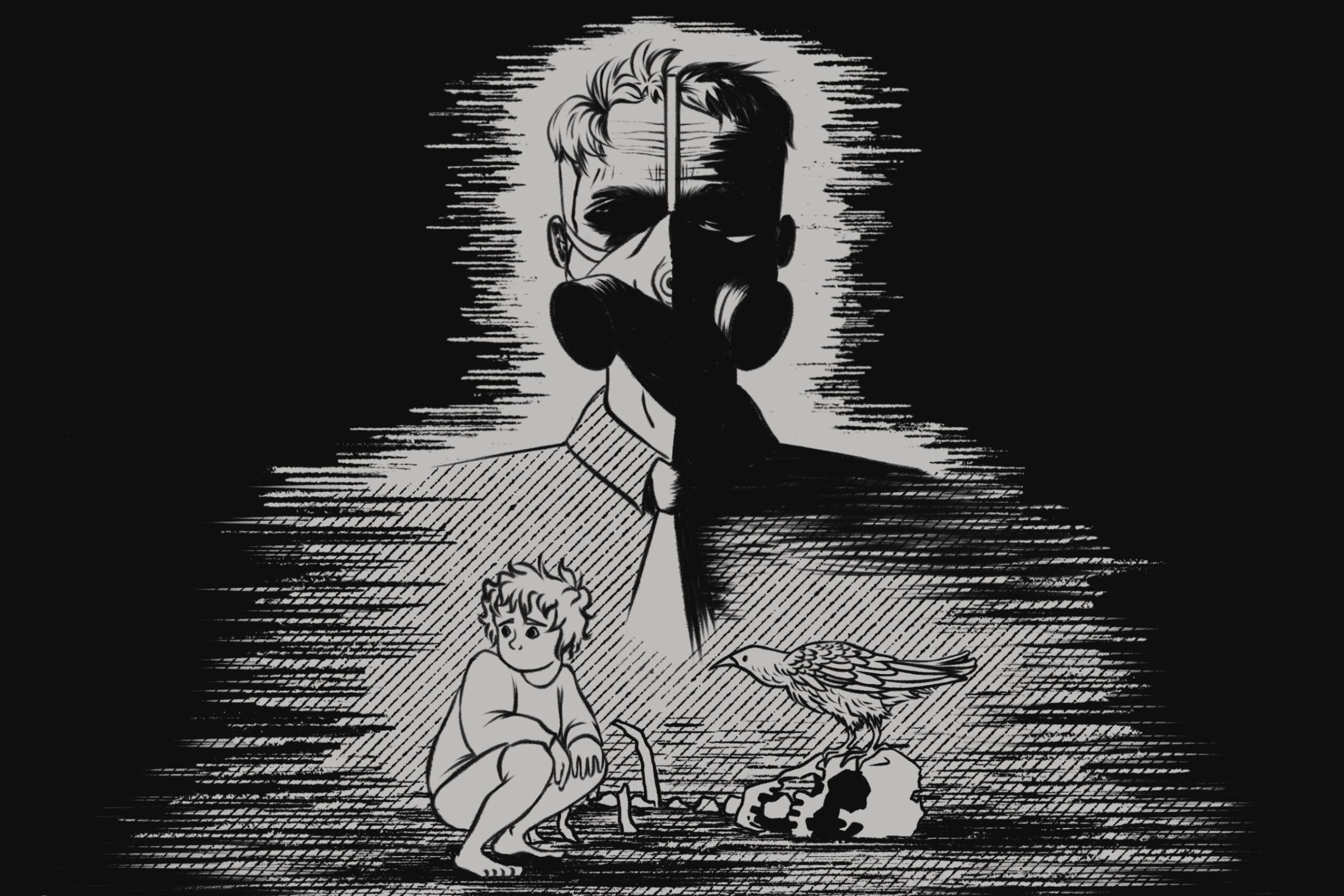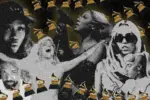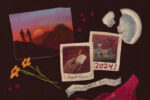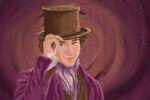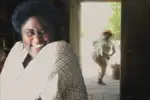Dystopian novels ruled young adult literature in the 2000s, but as long as human beings have obsessed over our flaws, we have told these kinds of stories. They act as fictional microcosms reflecting our own concerns for the future back on our world. The not-so-distant future or alternate reality where they take place is just the writer’s projection of where we’re headed if things don’t change.
While disparate dystopia stories will share themes and tropes, ultimately these worlds are shaped by the generations that create them. In a way, we can see dystopian stories as magnifying glasses on the consciousnesses of past groups, identifying what they saw as the largest threats to their ways of life.
When observed across multiple eras, these stories could create a kind of timeline, mapping generational fears of societal collapse. This is especially so in the past century, as technology and culture have progressed at an exponential rate and led to a wide variety of fears for the future. As we continue to advance, the themes of these tales from the past might clue us in on what we can expect in our future.
Back in 1932, Aldous Huxley wrote a novel so impactful that it’s still taught in high schools today: “Brave New World.” A disturbing book full of sex and vices, Huxley intended to express concerns over the moral degradation of society. It follows a collection of characters living in this world, some accepting of its flaws, others horrified by the state of humanity. It all culminates in an orgy followed by the protagonist’s suicide. From the way it portrays sex as impersonal and addictive, to how the characters who reject modernity act as the moral compass of the story, it’s clear Huxley feared the ways his society was loosening on some of its moral values. Primarily, the novel suggests that maintaining social norms is the only way the populus can stay out of the governing party’s control.
Through their regulation of vices and the population’s loss of morality, the people in power are able to control the world.
Huxley was a British writer who wrote “Brave New World” in the late 1920s. From that and the subjects the novel focuses on, it’s easy to see Huxley’s fears were largely a result of consumerism in the roaring 20s and the subsequent Great Depression. It would be easy to dismiss some of Huxley’s fears as prudish or traditionalist, but they make sense when viewed through a historical lens. He’d just witnessed a decade of happy indulgence resulting in the downfall of the world’s economy. It makes sense he would associate consumerism and the normalizing of taboos with the end of civilization.
Huxley also believed that the development of a surveillance state would be a part of this downfall, but “Brave New World” only touches on the idea briefly. George Orwell, one of the best-known dystopian writers in the world, expanded on the idea in his 1949 book “1984.” Orwell’s works share thematic elements with Huxley’s, which makes sense given that they were contemporaries and Orwell took great inspiration from the older writer. The similarities might also be attributed to their political beliefs, both being socialists and anti-totalitarians.
These beliefs come through clearly in “1984,” a book about a society controlled by a totalitarian surveillance state where even certain thoughts are illegal. The book’s protagonist witnesses the ways his government controls the population and resorts to inhumane methods to keep power. Even a cursory glance at the year the book came out makes it clear that Orwell was responding to the prevalence of totalitarian regimes across the world, from Hitler’s Nazi party to Stalin’s USSR. The rise in fascism, as well as the western world’s attempts to outpace fascist and communist groups, resulted in the exact kind of fear for the future that inspired Orwell’s novel.
Which brings us to Ray Bradbury’s 1953 novel, “Fahrenheit 451.” This novel centered around a controlling government force, focusing on censorship and destruction of countercultural ideologies. Unlike Orwell and Huxley, Bradbury was a staunch conservative, and wrote his book based on fears of communist ideologies and the loss of American values. The protagonist’s actions send this message clearly, as he doubly serves as an arm of the government assigned to burn counter cultural texts and a defender of a recovered Bible. Bradbury released the novel during the second Red Scare in America, when people feared communism would take away their traditional values and Marxist ideals would be forced upon them. The novel ends with a bomb destroying the protagonist’s home, further mirroring the fears America had of the USSR during the Cold War.
It’s worth noting, however, that this is not the only way to interpret Bradbury’s novel. Socialist groups might see it in another light, with the burning of books representing the U.S. government destroying ideologies it disagrees with, communism especially. It’s the ability to reinterpret the novel that makes “Fahrenheit 451” somewhat timeless. Any group being censored can see themselves in it, and at a time when America was staunchly divided in its political fears, this makes sense.
Jumping forward to 1985, Margaret Atwood published “The Handmaid’s Tale,” a book clearer in its interpretations. Atwood’s protagonist is a woman living in a society ruled by a right-wing religious group, one that adheres strictly to traditionalist values and creates a social hierarchy with women at the bottom. Rather than focusing on any technological advancement as her predecessors did, Atwood focuses on a nuanced and hauntingly realistic depiction of human reactions to society’s downfall. While it contains references to a surveillance state and totalitarianism, “The Handmaid’s Tale” is much more character-driven than past dystopian novels. It focuses more closely on individuals and their character arcs, giving readers more insight into their perspectives. This shows an evolution in the way writers were presenting their dystopias, in addition to a shift in the political alignment of the governmental force acting as the antagonist.
The 1980s saw the rise of Reagan’s conservative, evangelical politics, which directly threatened some of the newfound freedoms women and other marginalized groups in America had gained. The connection between Reagan’s focus on Christian values and the Christian religious structure that holds power in Atwood’s novel is difficult to ignore. The way the novel depicts the humanity of its female protagonist while showing how the patriarchal system she lives in devalues it connects to real fears of an increase in traditionalist, misogynist values.
When we reached the 2000s, the dystopia genre was bombarded by new additions, specifically in the young adult subgenre. Iconic franchises like “The Hunger Games” and “Divergent” gained mass appeal among young readers. So many similar stories flooded the market that tropes of the genre became the subjects of ridicule. But love or hate these 2000s series, it’s impossible to deny their connection to their predecessors. Suzanne Collins’s “Hunger Games” series and Veronica Roth’s “Divergent” both focus on individuals in a larger society telling their stories through the lens of human reaction, much like Atwood did. And both make use of technological advancement as a tool to control the masses, like in “1984.” However, these books have their own political points to make, centered around class divide.
The different districts in “The Hunger Games” and the factions in “Divergent” split people up into layers of a caste system, defining what careers people can enter and the quality of life they are afforded. Neither is a perfect metaphor for the political systems we have in place, since they take their persecution of different classes to the extreme, often resulting in the government-structured deaths of adolescents. But that’s always been the point of dystopia: to exaggerate and examine an issue the writer has concerns about, so their audience can see where things might go if left unchecked. These books were marketed towards and popular among teenagers, likely because they provided a sense of empowerment and hope that young people can fix a broken system.
The dystopia genre is still evolving. While it reached a significant peak in mainstream interest during the 2000s and 2010s, the 2020s have seen a few iconic entries so far, including a sequel to “The Handmaid’s Tale” and even long-running comic series like “Sweet Tooth.” Although it’s probably too early to pick out a book that would represent the dystopia genre in this time period, one could guess disease and political disarray will be central parts.
While many dystopias are grim and depressing on the surface, their point is never just to give in to despair. The reason these stories gain followings is because they help us understand the potential consequences of our actions. By reading these stories and finding parallels in our own world, we can find ways to prevent the worst from happening. Ambition and progress are what keep us moving forward, and dystopia stories keep us from doing so blindly.


